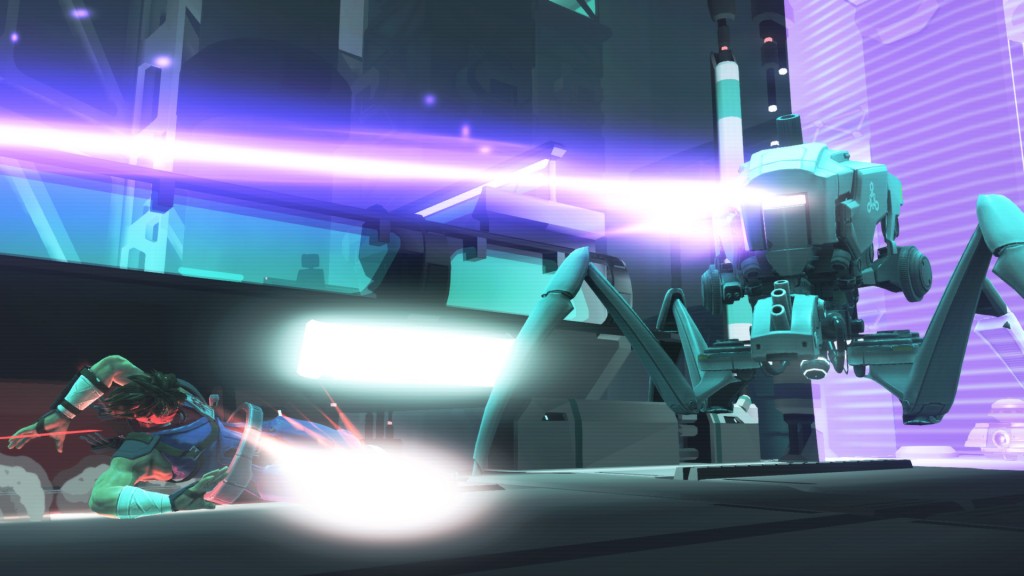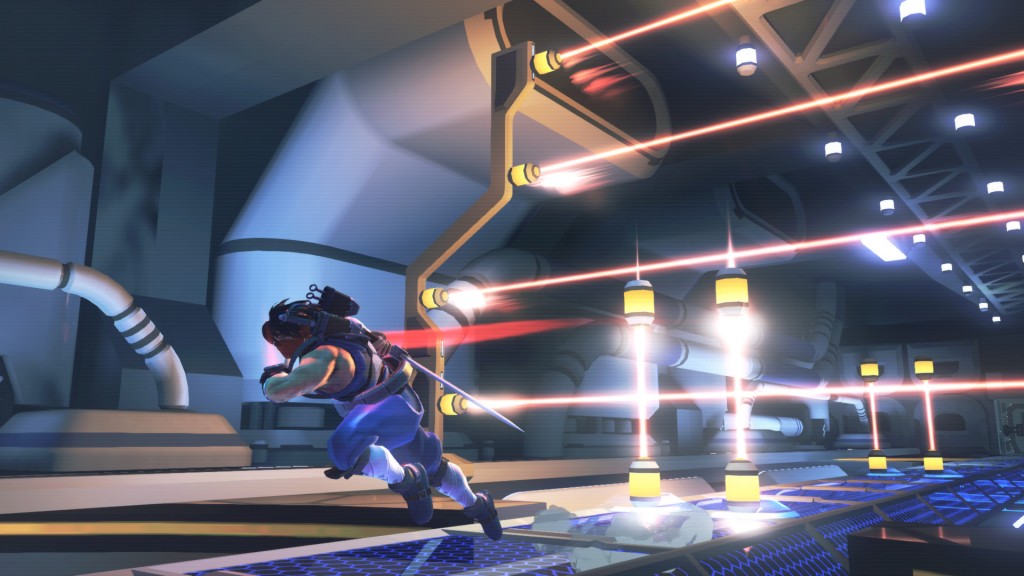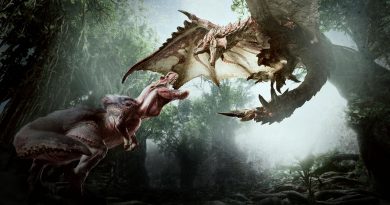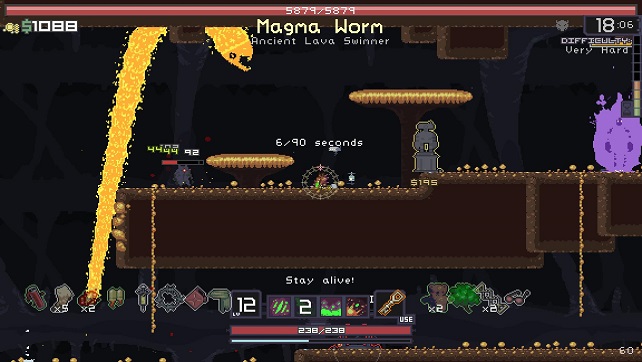(Review) Strider
Strider is an interesting series in that none of its games are quite like each other. Even the main character, Hiryu, has undergone a lot of changes over the years, lacking even his signature scarf in the original game. It’s rare for a series to lack this kind of continuity, or have its games so spread out across time and platforms. The first two games had high production values, which the PSX game did not. The feel of the NES game is markedly different from the arcade and PSX games. The PSX and NES games had an anime quality to them that the arcade lacked. And yet, somehow it all holds together. A man, a plan, a sword-slash: Strider.
The Strider of 2014 cherry-picks the best elements of every game. The non-linear map of the NES game is kept, but not the plodding pace. The high-velocity destruction of the PSX game is here, but not the tiny levels that constrict Strider’s speed and abilities. And the iconic bosses, characters, and story of the original game is here, but not the controller-breaking difficulty. The new game then adds in its own fresh tricks to the mix, many of which feel so right you know they’ll appear in future games. I love the new fast-wall-climb and fast-wall-descent animations, and the slide kick is more useful than ever, slipping beneath enemy’s shots to spring up behind them. Cipher itself can gain side effects such as freezing or fire, as well as charge up for an extra-large, extra-strong slash. And the way the new air dash interacts with the double jump is absolutely inspired.
But just like the earlier games, there’s room for improvement. They’re not deal-breakers, but they do keep the game from being perfect. (Again, just like the earlier games.) For example, I’m never fond of using the analog stick where the D-pad would do, especially in a twitch game like this. The D-pad instead switches Cipher’s effects, which is necessary for shielded enemies, but not particularly easy in the heat of battle; I lack the necessary third thumb. On later playthroughs I found myself memorizing when I’d need a certain effect so I could switch during a break in the action.
The weapons at Hiryu’s disposal are nicely varied beyond the iconic slash he’s known for. His eagle, panther, and satellite Options return from the original game. He gains a spread of kunai (ninja throwing daggers), and the air-dash can gain the ability to attack in passing. As an optional upgrade to find, the latter two can also share the property of the selected Cipher effect, so for example kunai could freeze airborne opponents to create platforms of them, or air-dashing past an opponent could impart the magnetic property to them, causing them to attract all projectiles on-screen. But the most Strider-like of the new abilities reflects enemy plasma fire back at the source by swatting it with Cipher. It takes a quarter-second of non-slashing for the ability to cool-down, which encourages a sole, precision strike. It is the perfect ability for a sword-wielding space ninja to have.
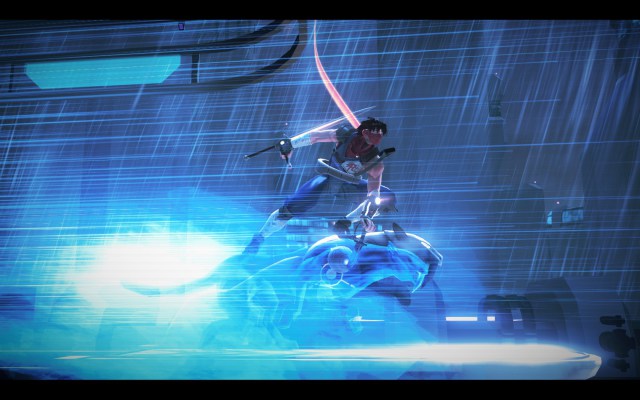
Unfortunately you don’t have as much leeway to stick with your favorite weapon as much as you’d like. Many foot soldiers have shields that render them immune to all except one particular type of attack. Cue that third thumb. The trio of Options require a shift-key kind of activation, and since one of the shifted buttons is the Slash you’re mashing like crazy, you’ll frequently get the wrong one, wasting meter. I’d really prefer a button dedicated to each Option. Did we really need two buttons for kunai? Did we really need two different ways of performing the launcher? No, no we didn’t.
The launcher, by the way, is an upward attack taken from the Marvel Vs. Capcom series of fighting games which Strider Hiryu has appeared in. The attack pops his enemy up in the air for retaliation-free combos, ending with the enemy lying prone. Only problem is, the attack and any follow-ups are ten times slower than simply mashing Slash. That’s not to say the launcher doesn’t have its uses. It does: it can defeat some boss’s blocking, de-shell small critters, and since the purple Cipher can’t rapid-slash anyway when both its boomerangs are out, you might as well go big. Plus, I appreciate the homage. But I still prefer it not have an entire button dedicated to it, especially since holding up on the joystick with Slash performs the move anyway.
Boss fights are at first blush quite varied. Some fights are just larger ordinary enemies first being introduced in a controlled way. Some fights are full-screen affairs against a monstrously large whatever. Some fights are more mano a mano. But each are dealt with in a very similar fashion: be patient, study the boss’s pattern, spam Option-C. That’s all you need to know. They’re still enjoyable for the change of pace and the slight puzzle-solving of how to blitzkrieg safely. But far harder are some of the locked-room challenges, where waves of enemies attack independently, ganging up on you at random times, and spreading out to cover one another. There’s no pattern to learn, just act and react.
Even running through some of the levels, it’s not advisable to leave living enemies behind you. Many enemies don’t fire until they notice you, and they don’t notice you unless you’re somewhat close. But once they start shooting they don’t stop until they’re three screens away. So you’ll bypass several enemies until you have to pause a moment to scale some obstacle, and all that firepower catches up to you. It’s a rather smooth way of encouraging you to strike down everything that moves without really requiring you to.
The subscreen map is one of the few imperfections that continues to bother me. Despite the game being set on one big map, in the subscreen it’s broken into sections, and only shown a section at a time. While that isn’t per se a problem, the game doesn’t tell me what parts of the section connect to which other sections, so large-scale navigation isn’t clear. Which is exactly the problem a map is supposed to solve. That holds for every kind of connection, too: neither the panther or eagle hotspots really point to where they lead. And although the ziptubes from the NES game do appear, they’re always one-way and never used for large-scale navigation, which they seem perfectly suited to do. Instead, panthers can fly? What?
Conversely, when it comes to gaining equipment or power-ups, the map shows too much, which mitigates the sense of exploration and discovery especially on you’re the first play through: you already know where the treasures are and aren’t. I try to imagine a Castlevania or Metroid that works that way, but I don’t like the result. Granted, there’s no RPG element here like in Castlevania, no semi-useful gear to collect for eons or stats to build. All pickups are either required or an obvious upgrade, so the result is more Metroid than Metroidvania. The whole “use the blue weapon to open the blue door” is kind of a clunkly way to gate areas of the map, but it works I guess. Strider is not a thinking man’s game. The exploration element is there, but much like Mark Of The Ninja, the minimap reduces much of it to scratching off all squares of a lottery ticket.
The minimap in particular tends to draw the eye more than it should, since it shows secrets and simplifies the graphics to simple collision detection. Which is a shame because the backgrounds in this game are amazing to look at. Despite the verticality that is part-and-parcel with platforming, the backgrounds still show places that mesh relatively well with actual reality. Tall apartment buildings, multi-level subways, towering military fortresses, and subterranean research warrens still seem pretty believable with all that verticality. The backgrounds aren’t just content with showing metal tiles behind your character, either. You’ll see roads and walkways end-on, with people milling about on them. There’s many times I wanted to walk into or out of the 2D screen just to explore. And coincident with the game’s mission of offing a high official in a major fortress-city, once you hang-glide into it during the opening, you stay in the city. It really does feel like you’re infiltrating the capital of an oppressive, totalitarian state.
The music helps with this feeling as well; be sure to hit the settings menu to turn up the music. Many music tracks from previous games reappear here, and sound better than they ever have before. Hang-glide into heroism with “Raid”, run through baddies with “Kazakh”, bring down bosses with “Coup”. The soundtrack is by far the best part of the audio experience. By contrast, the voicework is the worst, being far too self-consciously comic book. Voices shouting through the city’s loudspeakers while you play is a great way to build the character of the human bosses you soon fight without lots of actual cutscenes, as well as build the character of the repressed city itself. (I particularly liked the line about an upcoming food lottery.) But most of the game’s dialogue is far too campy to take seriously, or even leave turned on after a playthrough or two. The thin story just doesn’t leave much for character-building to work with. And while it’s true you’ll never leave Eurasia alive, it seems no one will be turned into the rust of anyone’s Cipher.
Speaking of which, the attack sound of Cipher colliding with an unfortunate robot sounds like the swishing of fabric. Not that I’d want the obnoxious sound of the NES game, but still, something that sounds a little more like plasma blade cutting through Soviet metal would have been nice. It’s really the only beef I have with the sound effects.

